 W
WArt pottery is a term for pottery with artistic aspirations, made in relatively small quantities, mostly between about 1870 and 1930. Typically, sets of the usual tableware items are excluded from the term; instead the objects produced are mostly decorative vessels such as vases, jugs, bowls and the like which are sold singly. The term originated in the later 19th century, and is usually used only for pottery produced from that period onwards. It tends to be used for ceramics produced in factory conditions, but in relatively small quantities, using skilled workers, with at the least close supervision by a designer or some sort of artistic director. Studio pottery is a step up, supposed to be produced in even smaller quantities, with the hands-on participation of an artist-potter, who often performs all or most of the production stages. But the use of both terms can be elastic. Ceramic art is often a much wider term, covering all pottery that comes within the scope of art history, but "ceramic artist" is often used for hands-on artist potters in studio pottery.
 W
WAmerican art pottery refers to aesthetically distinctive hand-made ceramics in earthenware and stoneware from the period 1870-1950s. Ranging from tall vases to tiles, the work features original designs, simplified shapes, and experimental glazes and painting techniques. Stylistically, most of this work is affiliated with the modernizing Arts and Crafts (1880-1910), Art Nouveau (1890–1910), or Art Deco (1920s) movements, and also European art pottery.
 W
WThe Aller Vale Pottery was formed in 1865 on the northern edge of the village of Kingskerswell in South Devon, England on the likely site of a medieval pottery. It became well known for the creation of art pottery at the end of the 19th century and gained Royal patronage, but declined thereafter, closing on this site in about 1924. The name continued in use until 1962 related to the production of mass-produced motto ware for the tourist market.
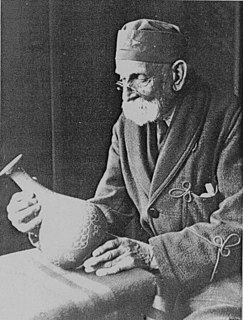 W
WAshby Potters' Guild was an English art pottery existing from 1909-1922.
 W
WWilliam Ault was an English potter, involved with a number of companies in the Staffordshire potteries and South Derbyshire making art pottery and more utilitarian wares.
 W
WBarbotine is the French for ceramic slip, or a mixture of clay and water used for moulding or decorating pottery. In English the term is used for three different techniques of decorating pottery, though in all cases mainly for historical works. For clarity, these types are numbered here as A-C.
 W
WThe sisters Hannah Bolton Barlow and Florence Elizabeth Barlow were artists who painted pottery for Doulton & Co. at their newly-established art pottery studio in Lambeth, London. Doulton's Lambeth studio allowed the decorators to sign or monogram their work, which allows many pieces to be attributed to individuals, though often more than one person worked on a piece.
 W
WBlue Mountain Pottery was a Canadian pottery company located in Collingwood, Ontario. It was founded in 1953 by Dennis Tupy and Jozo Weider and closed in 2004. Originally producing hand-painted ski motifs on purchased blanks, production of the red clay items started in 1953-1954. It went on to produce various types of pottery, from animal figurines to jugs, pots and vases. The company's products have a large fan base and are collected worldwide.
 W
WBrannam Pottery was a British pottery started by Thomas Backway Brannam in Barnstaple, Devon, England, in 1848. It later became part of the "rustic" wing of the art pottery movement.
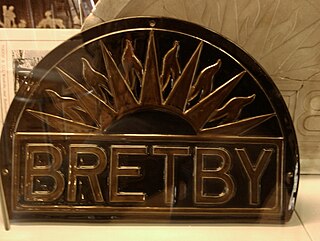 W
WBretby Art Pottery was an art pottery studio founded in 1882 by Henry Tooth and William Ault in Woodville, Derbyshire, where production began on 25 October 1883. Tooth went into partnership with Ault following his successful leadership of the celebrated Linthorpe Pottery in Middlesbrough where he had been recommended as general manager by the designer Dr Christopher Dresser in 1879.
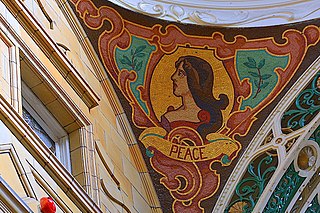 W
WBurmantofts Pottery was the common trading name of a manufacturer of ceramic pipes and construction materials, named after the Burmantofts district of Leeds, England.
 W
WCastle Hedingham Pottery was an art pottery studio run by Edward Bingham at Castle Hedingham in Essex, England.
 W
WErnest Chaplet was a French designer, sculptor and ceramist. He was a key figure in the French art pottery movement, and his works are held in international public collections such as the Musée d'Orsay, Paris.
 W
WThe Compton Potters' Arts Guild was an art pottery, founded by and based at the Surrey home of Scottish artist, Mary Fraser Tytler.
 W
WPierre-Adrien Dalpayrat or Adrien Dalpayrat was a French potter who was a significant figure in French art pottery, especially known for his innovative coloured ceramic glazes, mostly on stoneware, but also earthenware and porcelain. After working for several makers of faience, mostly in the south, from 1889 he established his own studio in Bourg-la-Reine, not far from Paris, with his work on sale in various galleries in the capital and other cities.
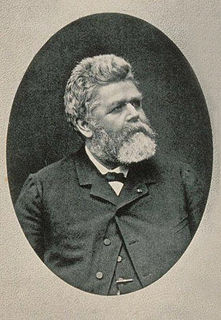 W
WJoseph-Théodore Deck was a 19th-century French potter, an important figure in late 19th-century art pottery. Born in Guebwiller, Haut-Rhin, he began learning the trade in his early 20s, moving to Paris at age 24. In 1856 he established his own faience (earthenware) workshop, Joseph-Théodore Deck Ceramique Française, and began to experiment with styles from Islamic pottery, and in particular the Iznik style.
 W
WAuguste Delaherche was a French ceramicist, who was a leading figure in French art pottery through the Art Nouveau period. Like other leading French potters of the period, he was intensely interested in ceramic glaze effects of colour and surface texture. He began his career making stoneware, but later also made porcelain in his studio.
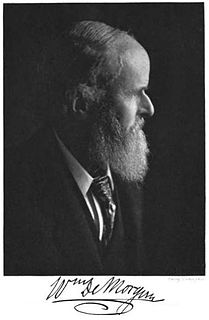 W
WWilliam Frend De Morgan was an English potter, tile designer and novelist. A lifelong friend of William Morris, he designed tiles, stained glass and furniture for Morris & Co. from 1863 to 1872. His tiles are often based on medieval designs or Islamic patterns, and he experimented with innovative glazes and firing techniques. Galleons and fish were popular motifs, as were "fantastical" birds and other animals. Many of De Morgan's tile designs were planned to create intricate patterns when several tiles were laid together.
 W
WTaxile Maximin Doat (1851–1939) was a French potter who is primarily known for his experimentation with high-fired porcelain and stoneware using the pâte-sur-pâte technique. His book on these techniques Grand Feu Ceramics was published in 1905 and helped spread his discoveries internationally. His influence is apparent in the types of glazes and approaches used in studio pottery in the twentieth century.
 W
WSir Edmund Harry Elton, 8th Baronet was an English inventor and studio potter noted for his production of Elton Ware at the Clevedon Elton Sunflower Pottery.
 W
WEstudio Destra Internationally renowned Ceramics/Pottery Workshop based in Silves, Algarve, Portugal.
 W
WEwenny Pottery, founded in 1610 in the village of Ewenny, is the oldest working pottery in Wales.
 W
WFarnham Pottery is located in Wrecclesham near Farnham, Surrey. This is one of the best preserved examples of a working Victorian country pottery left in England and is a grade II listed building. Its significance in the local area is shown by it featuring on the emblem of Wrecclesham Cricket Club.
 W
WHowell James & Company was a firm of jewellers and silversmiths based in Regent Street in London which operated between 1819 and 1911. In 1876 they added galleries showing professional art pottery and the fashionable amateur china painting, and immediately became the main London venue for this.
 W
WEdmond Lachenal was a French potter. He was a key figure in the French art pottery movement, and his works are held in many international public collections.
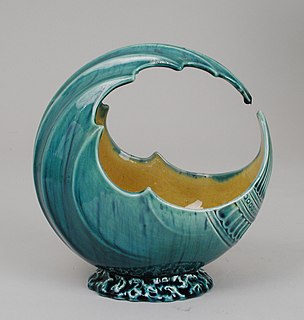 W
WLinthorpe Art Pottery was a British pottery that operated between 1878 and 1890 in Linthorpe, Middlesbrough. It produced art pottery, and is especially known for the early collaboration of the designer Christopher Dresser; many of the early wares have his impressed signature.
 W
WThe four Martin Brothers were pottery manufacturers in London from 1873 to 1914. In their own day their Martinware was described as art pottery, and they were one of the earliest potteries making this, but in modern terms they fit better into the studio pottery category, which was invented later.
 W
WMata Ortiz pottery is a recreation of the Mogollon pottery found in and around the archeological site of Casas Grandes (Paquimé) in the Mexican state of Chihuahua. Named after the modern town of Mata Ortiz, which is near the archeological site, the style was propagated by Juan Quezada Celado. Quezada learned on his own to recreate this ancient pottery and then went on to update it. By the mid 1970s, Quezada was selling his pottery and teaching family and friends to make it and the pottery was able to penetrate the U.S. markets thanks to efforts by Spencer MacCallum and later Walt Parks along with Mexican traders. By the 1990s, the pottery was being shown in museums and other cultural institutions and sold in fine galleries. The success of the pottery, which is sold for its aesthetic rather than its utilitarian value, has brought the town of Mata Ortiz out of poverty, with most of its population earning income from the industry, directly or indirectly.
 W
WMaw & Co have made earthenware encaustic tiles for walls and floors since 1850, when the English company was established by George Maw and his brother Arthur. Their first factory was in Worcester and in 1862 the company moved to Broseley, Shropshire in the Ironbridge Gorge. In 1883 they moved to the Benthall Works in Jackfield, Shropshire. The new, purpose-built factory was the largest tile works in the world and the company was the world's largest producer of ceramic tiles, making more than 20 million pieces a year.
 W
WBernard Moore (1850-1935) was an English pottery manufacturer and ceramic chemist known for the innovative production of art pottery, especially his flambé glazes and pottery with reduced lustre pigments. After forty years running his family's pottery business, he set up his own pottery studio in Stoke-on-Trent in 1905 where he made art pottery with the help of a few assistants. After closing the studio in 1915, he worked as a ceramic consultant.
 W
WPilkington's Lancastrian Pottery & Tiles was a manufacturer of tiles, vases and bowls, based in Clifton near Pendlebury, Lancashire, England. The company was established in 1892 at Clifton Junction, alongside Fletcher's Canal. The company employed talented designers, the most famous of whom was Charles Voysey. Production of art pottery was stopped at the end of the 1930s, although tile production continued. Today the site is occupied by Pilkington's Group Plc.
 W
WPoole Pottery is a pottery brand, based in Stoke on Trent, Staffordshire, England. As a company, it was founded in 1873 on Poole quayside, where it continued to produce pottery by hand before moving its factory operations away from the quay in 1999. Production continued at a new site in Sopers Lane until its closure in 2006. The name is now a brand for products made in Staffordshire. Historical products from Poole Pottery are displayed in the Victoria and Albert Museum in London.
 W
WPorches Pottery is a producer of hand-painted pottery in the town of Porches, in the Algarve region of Portugal. The pottery was founded in 1968 by artists Patrick Swift and Lima de Freitas, in order to revive a traditional Algarve pottery industry that was rapidly dying out in favour of more modern techniques. Swift and de Freitas chose Porches for its history as a pottery centre, dating back for many centuries, and for its clay pits.
 W
WRaku ware is a type of Japanese pottery traditionally used in Japanese tea ceremonies, most often in the form of chawan tea bowls. It is traditionally characterised by being hand-shaped rather than thrown, fairly porous vessels, which result from low firing temperatures, lead glazes and the removal of pieces from the kiln while still glowing hot. In the traditional Japanese process, the fired raku piece is removed from the hot kiln and is allowed to cool in the open air.
 W
WRoyal Doulton is an English ceramic and home accessories manufacturer founded in 1815. Operating originally in Vauxhall, London, later moving to Lambeth, in 1882 it opened a factory in Burslem, Stoke-on-Trent, in the centre of English pottery. From the start the backbone of the business was a wide range of utilitarian wares, mostly stonewares, including storage jars, tankards and the like, and later extending to pipes for drains, lavatories and other bathroom ceramics. From 1853 to 1902 its wares were marked Doulton & Co., then from 1902, when a royal warrant was given, Royal Doulton.
 W
WThe Ruskin Pottery was an English art pottery studio founded in 1898 by Edward R. Taylor, the first Principal of both the Lincoln School of Art and the Birmingham School of Art, to be run by his son, William Howson Taylor, formerly a student there. It was named after the artist, writer and social thinker John Ruskin, as the Taylors agreed with, and followed the tenets of Ruskin. The pottery was situated at 173-174 Oldbury Road, Smethwick, then in Staffordshire.
 W
WSalopian Art Pottery was a range of decorative earthenwares made by the Benthall Pottery at Benthall, Shropshire, England, between c. 1880 and c. 1930. Pieces were marked with a variety of impressed and inscribed marks, the most frequent mark being 'SALOPIAN' in upper-case printers' type.
 W
WSang de boeuf glaze, or sang-de-boeuf, is a deep red colour of ceramic glaze, first appearing in Chinese porcelain at the start of the 18th century. The name is French, meaning "ox blood", and the glaze and the colour are also called ox-blood or oxblood in English, in this and other contexts.
 W
WKatherine Swift (1956–2004) was an Irish-born Portuguese painter, illustrator and ceramicist.
 W
WEdward Richard Taylor RBSA was an English artist and educator. He painted in both oils and watercolours. He became a member of the Royal Birmingham Society of Artists in 1879.
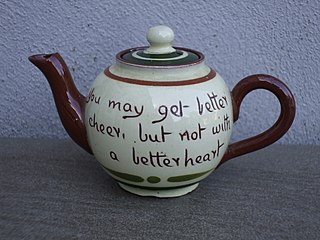 W
WTorquay pottery or Torquay ware refers to pottery made in Torquay, Devon, England, using local clay, at one of fifteen or so local potteries chiefly serving the tourist trade, but also supplying high-end retailers such as Liberty of London.
 W
WThe Tremaen pottery was established in 1965 in Marazion, Cornwall by Peter Ellery, the brother of Brenda Wootton, the Cornish poet and folk singer. Ellery was not a potter, having trained as an artist at Bath College. Despite this, his unconventional style became a commercial success and in 1967 the pottery moved to Newlyn in order to expand its workforce to 12. However, by 1988 the economic situation made Ellery decide to close the pottery, and he spent the last ten years of his life painting.
 W
WTroika was an art pottery that operated in Cornwall from 1962 to 1983. It was founded by three people, Leslie Illsley, Jan Thompson and Benny Sirota who took over the Powell and Wells Pottery at Wheal Dream, where Sirota had previously worked as a decorator and driver. The name is from the Russian тройка, meaning "a set of three", or triumvirate.
 W
WA Wally Bird is a tobacco jar or vase in the style of a grotesque owl or bird, first termed for the sculptural productions in this form by Robert Wallace Martin. These were typical examples of Martinware — salt-glazed stoneware which was produced by the Martin Brothers in their pottery; first in Fulham and then in Southall.
 W
WWest German Art Pottery is essentially a term describing the time period of 1949-1990 and became the early way to describe the pottery because the country of origin, with numbers denoting the shape and size, was often the only "mark" on the base. Even though company names are now better known, and many items are attributed to specific makers, the more generic term "West German pottery" remains in common use. "Fat Lava" is a popular term that strictly refers to a fairly small subcategory of glazes but is all too often improperly used as a synonym for West German pottery. West Germany began in 1949: World War II ended in 1945, the next 4 years were the "zone" era with the country into the "US Zone", "Russian/Soviet Zone", "British Zone", and "French Zone", and it was 1949 when the East/West division replaced the zones.